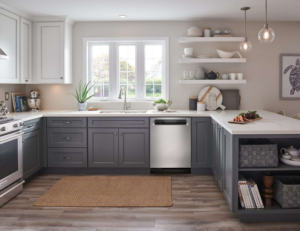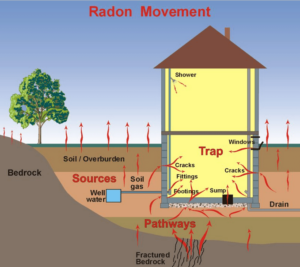If you’re remodeling your kitchen, the first step is a noisy and messy one–tearing out old materials. This may mean rerouting plumbing and electrical lines, especially if you’re moving the location of major appliances.
If you’re buying new appliances, plan to order them in advance of starting the remodel. This way, you can minimize your downtime while you wait for deliveries. Visit the Kitchen Remodeling Lexington KY for more information.

Cost
A well-executed kitchen remodel has the potential to add value to a home. However, costs can easily exceed your budget without careful planning. Fortunately, there are several ways to cut corners and stay within your remodeling budget.
Material costs account for the majority of kitchen remodeling expenses. The quality, brand, and size of your materials can significantly impact costs. You can reduce costs by selecting economy-, middle-, or luxury-grade materials; limiting the number of upgrades; and shopping around for the best prices. For example, you can save by purchasing stock cabinets rather than custom ones. You can also find great deals on flooring, lighting, and appliances at online sale sites, salvage stores, and local resale shops.
Another major cost driver is plumbing and electrical work. Moving pipes, upgrading wiring, and extending gas and plumbing lines can quickly push up costs. Depending on the scope of your project, these expenses can account for anywhere from 15 to 25 percent of your total costs.
Demolishing walls can increase your labor costs by up to 40 percent. It’s important to note that removing load-bearing walls will require professional demolition services, which are more expensive than tearing down non-load-bearing walls. Other significant costs include new appliances, furniture, and fixtures. These can add up quickly, especially if you’re going for high-end finishes or appliances.
Kitchen cabinet costs typically account for 28 percent of the budget, with homeowners spending an average of $8,400 on their cabinets. This figure is often higher if you select custom cabinets, more than one type of material, or elaborate hardware. You can save by choosing less expensive cabinet options or opting for refacing over replacing.
Labor can account for 18% to 25% of your overall kitchen remodeling costs. This is because full-scale remodels that involve changing the footprint of a kitchen or adding extensions require more demolition, plumbing and electrical work. It’s essential to understand that many of these costs are not reimbursable by insurance, so it’s crucial to create a realistic budget and leave room for unexpected expenses.
Design
The kitchen is the heart of most homes, where families spend a lot of time together. It’s also where most meal prep and entertaining takes place, making it important that the layout is comfortable, efficient and attractive. A kitchen remodel provides the perfect opportunity to make these changes.
If your kitchen is dated, dark or cramped, you may want to consider a complete renovation. This is a bigger undertaking than replacing fixtures and finishes, and usually requires professional construction and design services. It might even involve moving walls, adding or removing utilities and extending the floor plan to add or change rooms.
Before you get started, you’ll need to decide on a style and look that will suit your home and family. Reviewing kitchen photos and design ideas can help you narrow down your options. For a modern look, you might choose sleek cabinets and countertops in granite or quartz, open shelving and neutral colors like white or gray. If you’re remodeling a classic kitchen, on the other hand, you might choose wood cabinets and light-colored stone for a timeless look.
Once the design is finalized, it’s time to begin the project itself. Most remodels start with demo, which often involves tearing down existing wall and ceiling drywall to expose the structural framing. This step can be the most disruptive and costly, especially if it includes relocating utility pipes and modifying the heating, ventilating and air-conditioning system in the space.
After the framing work is finished, contractors can install new drywall and paint. This prepares the space for installation of the cabinets, countertop and flooring. Appliances go in next, followed by backsplash tile and window treatments. Depending on the scope of the remodel, lighting and other details can be added at any point.
While many homeowners take on small kitchen remodeling projects on their own, large-scale renovations typically require a general contractor and a team of designers, plumbers and other subcontractors. Some professionals offer both design and construction services, while others specialize in a particular type of remodel. If you’re planning a major renovation, you might need to obtain a permit from your city or town and comply with building codes.
Layout
Kitchen remodeling requires a lot of demolition and utility work. The first step is to tear out all of the appliances and cabinetry, including removing walls or portions of them. Once the space is empty, construction can begin. This includes laying in plumbing, electrical and gas lines to accommodate your new layout. Once the utility lines are in place, the carpentry crew can rebuild your walls, transforming your kitchen into a completely new room with more open space, structured enclosers and pass-through windows. Once the walls are finished, you can install flooring. Most homes use tile or roll-out vinyl, but composite laminate boards are gaining popularity. Finally, the installation of mouldings and kickboards completes the transformation into a beautiful kitchen.
Before you start your kitchen renovation project, consider the goals for the new room and how it will be used in the future. Then choose the layout that best reflects those goals. You may want to have a single wall of cabinets for maximum efficiency in a tight space, or you might prefer a horseshoe or U-shaped configuration with multiple working zones. If you have small children or elderly family members who will be using the kitchen, make sure to account for them when designing your space.
A basic kitchen remodel is a cost-effective way to upgrade your home’s kitchen without breaking the bank. It usually includes cosmetic changes such as repainting, adding or replacing hardware and updating appliances. It may also include minor structural alterations, such as relocating a sink or refrigerator. Depending on the scope of your project, this type of remodel can be completed quickly, which minimizes downtime and inconvenience.
A major kitchen remodel involves a more extensive change to the room’s layout and design, and is often accompanied by an overhaul of the lighting, electrical and plumbing systems. Major remodels generally take longer to complete and are more expensive than minor ones. They may require the removal of walls and ceilings or the addition of a window. They can also involve extensive drywall construction and expensive finishes, such as granite counters and hardwood floors.
Storage
A kitchen remodel can be a messy job. Unless you are a skilled DIYer and have experience framing in new windows, tearing down (potentially load bearing) walls or hanging expensive cabinets, hiring a contractor is the best way to ensure your project goes as smoothly as possible. A general contractor can also help you manage your project, keep you on schedule and on budget and act as a go-between for you and your plumber, electrician and flooring specialist.
Many homeowners don’t realize that there are a variety of storage options available during kitchen remodeling. For instance, you can add recessed shelves between studs in the wall to store things like spices and canned goods. These kitchen storage ideas are an easy, low-cost way to make your kitchen more functional and attractive.
Another option is to move your sink, stove and refrigerator into the walls. This allows you to free up cabinet and counter space for storage. However, it is important to consider the structural impact of removing walls and whether or not plumbing, electrical and venting will need to be moved as well.
If you’re considering moving appliances into the wall, be sure to talk to your designer and contractor about their cost, durability and resale value before making a decision. It can be much more expensive to relocate a refrigerator, cooktop or sink than you might expect.
During a kitchen remodel, it is important to organize your food, drink and cleaning supplies so that you can still have access to them while the construction takes place. This will save you a lot of money in extra restaurant meals and grocery trips.
Aside from a new sink, faucet and appliances, the largest costs in a kitchen remodel are usually the countertops, cabinets, flooring and backsplash tile. It’s a good idea to set aside a separate budget for these items so that you don’t overspend. It’s also a good idea to shop around and get price quotes before selecting materials.

